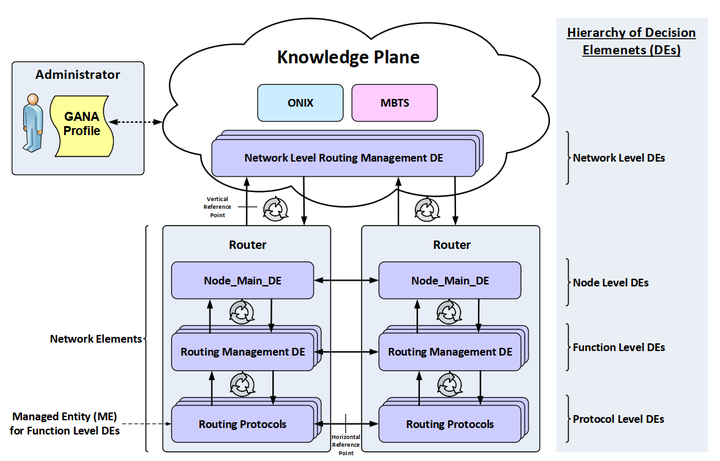Enabling autonomicity in wireless mesh networks with the ETSI AFI GANA reference model
 Global view of the GANA Reference Model
Global view of the GANA Reference Model
Abstract
The distributed nature of wireless mesh networks (WMNs) allows them to benefit from multiple autonomic functionalities. However, the existing landscape of self-x solutions (eg, self-configuration) is fragmented and the lack of a standardized framework through which interoperable autonomics can be developed has been hampering adoption and deployment of autonomics in real-world service networks. There is a need for a standardized architectural framework that enables to comprehensively support and integrate interoperable components for autonomicity in WMNs. Such an architecture (autonomicity-enabled wireless mesh architecture) is currently being standardized by the working group called Evolution of Management towards Autonomic Future Internet (AFI) in the European Telecommunications Standards Institute within the Network Technologies Technical Committee. The proposed autonomic wireless mesh architecture is an instantiation of the AFI GANA (Generic Autonomic Network Architecture) reference model, a standards-based approach to autonomics. This paper complements and extends the early version of the architecture by further detailing the architectural principles and providing experimental and validation results. First, we provide a brief overview of the AFI GANA reference model and then show how each of its building blocks can be instantiated for WMNs. We evaluate the proposed architecture by implementing and testing the 4 basic self-x functionalities defined by the GANA model. The provided guidelines can now help researchers and engineers build autonomicity-enabled WMNs using a standardized framework that enables adoption and deployment of autonomics by industry, thereby enabling researchers and engineers to contribute to the further evolution of the standard in the European Telecommunications Standards Institute.